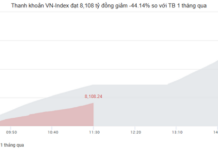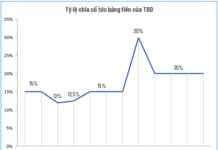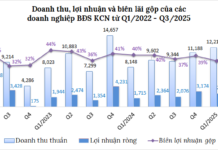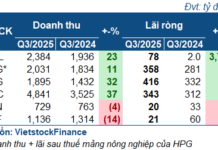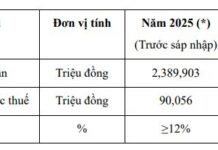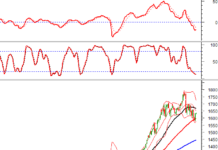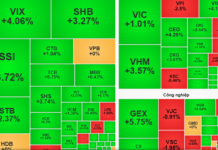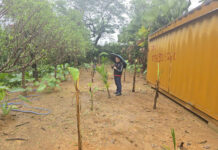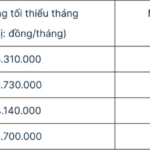Deputy Prime Minister has requested that the Ministry of Natural Resources and Environment collaborate with the Ho Chi Minh City Real Estate Association (HoREA) and report to the Prime Minister before August 31, 2024.
Previously, HoREA proposed to the People’s Committee of Ho Chi Minh City to review the method of calculating the adjusted land price table.
According to HoREA, the actual land price calculation and the proposed rates by consulting units for some roads in many districts and counties in the city are based on old prices according to Decision 02/2021, multiplied by 5-6 times to get the new price, which lacks a clear basis.
In addition to integrating land price adjustment coefficients (K factors), the drafting agency also added another adjustment index, causing land prices in some areas to increase by 10-20 times compared to the present.
Typically, land prices in District 1 have been determined to increase by 5 times compared to the old land price table, while District 4 increased by 11.3 times and District 5 by 5.6 times (except for Bai Say and Dang Thai Than streets). Meanwhile, the prices in outlying counties have increased dramatically, with Hoc Mon expected to rise by 30-50 times and Binh Chanh by 20-30 times.
The significant increase in land prices in outlying districts has greatly affected local residents who wish to change land use purposes, making them feel unfair as the increase rate exceeds the average of 7 times in Ho Chi Minh City.
Therefore, HoREA suggested constructing land prices in the table based on integrating the land price table and multiplying by the K factor if necessary. At the same time, they proposed adding land prices for 570 new roads to calculate land use fees for individuals and households, similar to the method of calculating land use fees applied since the 2013 Land Law, to reassure the people. The new land price table should take effect from January 1, 2026, according to the 2024 Land Law. Currently, the land price table in Ho Chi Minh City continues to be applied until December 31, 2025.

Recently, Ms. Do Thi Thu Giang, Director of Savills Consulting Services in Ho Chi Minh City, also shared that building a land price table based on market principles is necessary, but some points should be considered before approval and implementation.
Ms. Giang analyzed that the proposed land price table in Ho Chi Minh City would directly affect the interests of two different groups.
The first group, who will benefit, includes those who receive support from the state in terms of land revocation and resettlement arrangement (according to Articles 109 and 111 of the 2024 Land Law).
The second group, who will be adversely affected, consists of households and individuals recognized and converted for land use purposes. According to the previous 2014 Land Law, financial obligations were estimated differently for land within and beyond the limit: for land within the limit, the calculation was based on the land price table, while for land beyond the limit, it was based on specific land prices.
However, the current 2024 Land Law no longer makes this distinction, and the entire area will be subject to prices according to the land price table. As a result, with the proposed land prices being significantly higher than the current ones, financial obligations for land within the limit will increase. The proposed land price table, with its substantial increase, will lead to higher financial obligations for this portion.
Therefore, Ms. Giang suggested that postponing the implementation of the new land price table until December 31, 2025, is reasonable, given the significant increase in the proposed prices compared to the old ones and the short time frame for application.
This sudden change creates a substantial financial burden for the affected groups. Hence, the development and application of the land price table should be carefully considered to balance the interests of all parties, especially prioritizing the protection of the people’s rights.
Additionally, the methods used to determine land prices are not yet synchronized and remain simplistic. In some high-value areas, the method for constructing the land price table seems to simply involve multiplying by a fixed coefficient for all roads.
For example, in District 1, a coefficient of 5.0 is applied uniformly to all locations and roads. As a result, Dong Khoi Street is proposed at a price of 810 million VND/m2 (compared to 162 million VND/m2 currently), and Hai Ba Trung Street (from Ben Bach Dang to Nguyen Thi Minh Khai) at 484 million VND/m2 (compared to 96.8 million VND/m2 currently). Similarly, District 4 has a coefficient of 11.3, and District 5 is 5.58.
“This approach is essentially no different from applying the old land price table and multiplying by the K factor, and thus does not truly reflect the market value of each road as intended by the Land Law,” said Ms. Giang.
According to the Savills expert, while updating the land price table to reflect market values is an important step forward, the current proposal needs further improvement. The methodology should be refined and tailored to specific areas rather than just applying general coefficients. A gradual, transparent transition that ensures the interests of all stakeholders is essential for the long-term success of this new system.
Comprehensive regional connectivity
In addition to building strong physical infrastructure, Ho Chi Minh City needs to strengthen its soft connections with other provinces in the region in order to promote economic development. This includes prioritizing the training of skilled workforce and ensuring access to quality healthcare.





